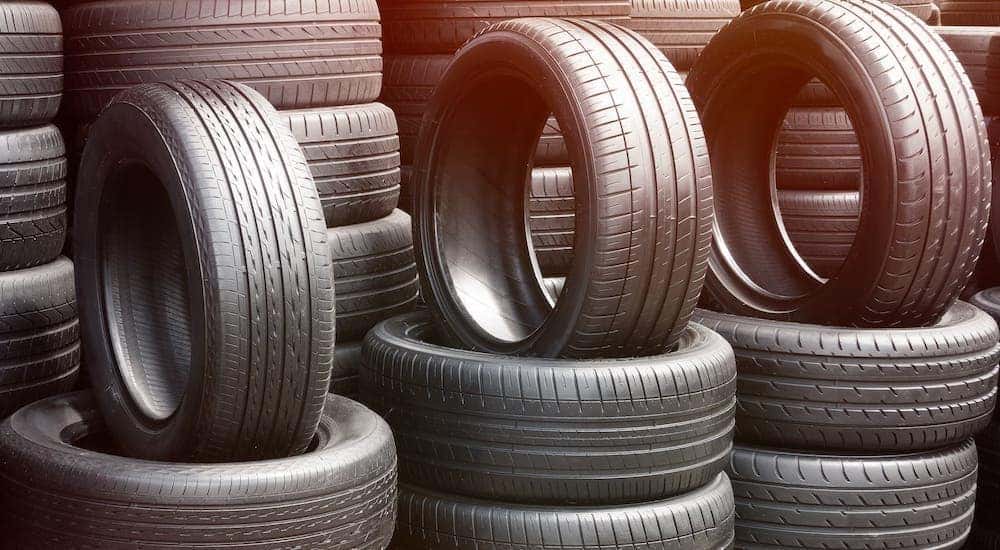Tire Service: Understanding Tire Stress Surveillance Systems
Comprehending Tire Pressure Tracking Equipments (TPMS) is a crucial element of keeping ideal car efficiency and security on the road. With improvements in auto innovation, TPMS has actually come to be a standard attribute in modern-day automobiles, providing real-time information on tire pressure levels.

Relevance of TPMS
The relevance of Tire Stress Monitoring Equipments (TPMS) exists in their capability to improve lorry security and efficiency through real-time monitoring of tire stress levels. Keeping the proper tire pressure is critical for guaranteeing optimal handling, stopping, and total security of a vehicle. TPMS provides vehicle drivers with immediate feedback on any type of overinflated or underinflated tires, enabling prompt modifications to be made.
Elements of TPMS
Sensing units are normally situated in the tire valve stem or connected to the wheel setting up, where they determine tire pressure and send data to the control module. Some progressed TPMS models additionally display the real tire pressure analyses for each tire, supplying drivers with real-time information to make sure optimum tire efficiency and safety. By monitoring tire stress continually, TPMS aids avoid accidents, reduces tire wear, and enhances fuel effectiveness, making it a critical component for vehicle safety and security and efficiency. mopar tire service specials.
Kinds Of TPMS

On the other hand, indirect TPMS counts on the automobile's wheel rate sensing units to keep track of tire stress. This system identifies underinflation by contrasting the rotational rates of the wheels. Indirect TPMS is much less costly than direct TPMS, as it utilizes existing sensors within the vehicle.
While straight TPMS offers more precise readings, indirect TPMS is simpler in design and usually calls for less maintenance. Both systems have their restrictions and advantages, and the selection in between them typically depends on aspects such as price, vehicle make, and personal choice. Understanding Recommended Site the distinctions in between these 2 types of TPMS can help vehicle proprietors make educated decisions relating to tire maintenance and safety.
TPMS Upkeep Tips
Conduct routine checks on the tire pressure levels and compare them with the TPMS readings to ensure they are consistent. During tire rotation or replacement, make certain that the TPMS elements are taken care of very carefully to prevent any potential damage. If the TPMS cautioning light illuminates on the dashboard, resolve the issue quickly by inspecting the tire pressures and the overall system for any mistakes.
Advantages of Correct Tire Stress
Preserving appropriate tire pressure, as browse around these guys emphasized in TPMS Upkeep Tips, is crucial for reaping the numerous advantages linked with optimum tire pressure levels. Among the key advantages of preserving the appropriate tire pressure is enhanced fuel efficiency. When tires are properly blown up, there is much less rolling resistance, leading to much better fuel economy. In addition, appropriate tire pressure makes sure even tire wear, expanding the life-span of the tires and promoting safer driving conditions. With the best tire stress, lorries likewise have better handling and grip, particularly in unfavorable climate condition. This can boost total driving efficiency and security for the motorist and passengers. Maintaining ideal tire pressure can add to a smoother and more comfy trip by lowering vibrations and sound caused by underinflated tires. Finally, the advantages of proper tire stress exceed simply tire long life; they include improved gas performance, improved safety and security, much better lorry performance, and total driving convenience.
Verdict
Finally, recognizing tire stress surveillance systems (TPMS) is essential for preserving ideal tire stress and guaranteeing lorry safety and security. By recognizing the importance of TPMS, recognizing with its components, understanding the various kinds offered, sticking to appropriate maintenance suggestions, and understanding the advantages of keeping correct tire stress, vehicle drivers can boost their driving experience and lengthen the lifespan of their tires. Proper tire pressure is key to safe and efficient car operation.
